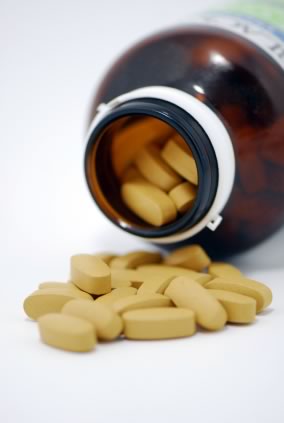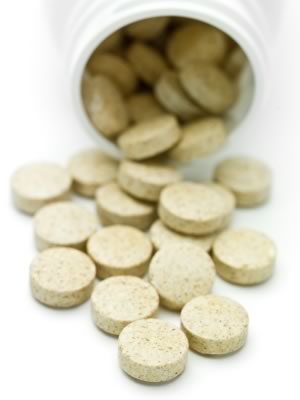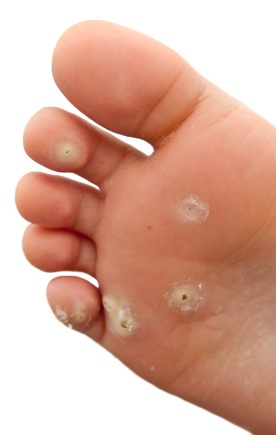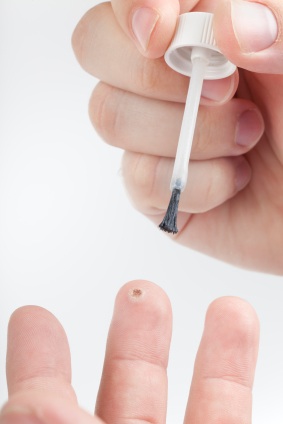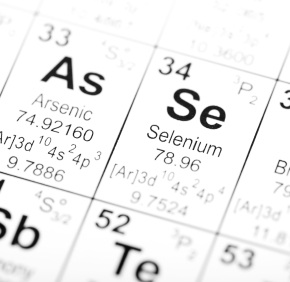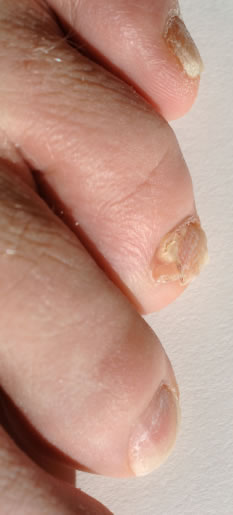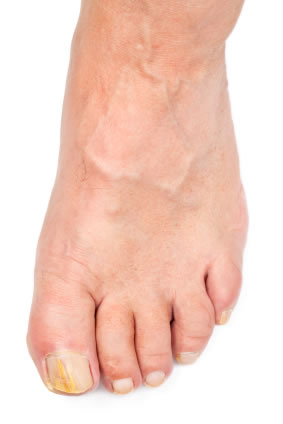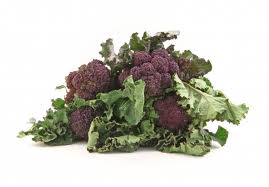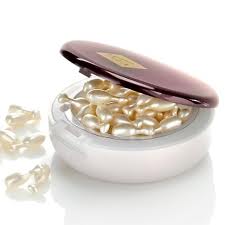Poison ivy is notorious for causing skin irritation and rashes. When this happens, it is called allergic contact dermatitis. A person will generally experience this because poison ivy has an irritant in it that humans are sensitive to, and it is also found in other kinds of toxic plants, such as poison sumac or poison oak. The irritant that is present in these toxic plants is an oily kind of resin that is called urushiol. This is what causes rashes and irritates the skin in the process.
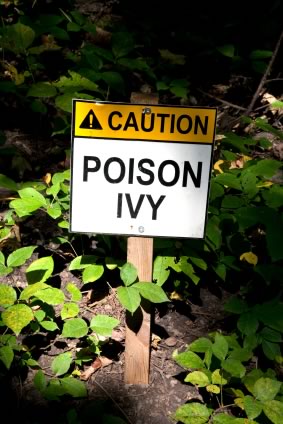
Though a person will certainly be bothered with the itchiness that occurs from a rash from poison ivy, there is the peace of mind that a rash from poison ivy, poison sumac or poison oak is really never very serious. There are several methods that can be done at home to relieve the symptoms of the dermatitis until it goes away on its own.
Symptoms
A person should suspect that poison ivy is to blame if any of the following symptoms are present:
- Redness
- Itching
- Swelling
- Blisters
Due to the way that a plant generally brushes against a person’s skin, the rash will probably appear to be in a straight line. However, it is possible for the rash to be more widespread if a person brushes against any kind of pet fur or clothing that happens to have urushiol coated on it.
After coming into contact with urushiol, a reaction will develop about 48 hours later, at the most. It has the potential to last upwards of two months, depending. How severe the dermatitis rash is ultimately depends on how much urushiol was involved in the contact.
In cases with more severity involved, there may be other rashes that appear a few days after a person was first exposed to the resin, and it will probably look as if though it is beginning to spread. However, this is probably not the case; it is more probable that the skin simply absorbed the resin at a stranger rate than normal.
The skin will not be affected unless it comes in direct contact with urushiol from the plant. If a person scratches the blisters and they pop, the rash will not spread from touching the fluid. However, if they are dirty fingernails with germs underneath, there is the risk of another bacterial infection.
When to See a Doctor
If any of the following instances occur, it is recommended to see a medical professional for assistance:
- The reaction is widespread or otherwise severe.
- The rash is located on a sensitive area, such as the mouth, eyes or genitals.
- The blisters are beginning to seep pus.
- A fever begins to develop of over 100 degrees Fahrenheit, or 37.8 degrees Celsius.
- The rash remains after several weeks.
Causes
The three main causes of developing a dermatitis rash and the itchiness that follows include poison ivy, poison oak, as well as poison sumac.
- Poison ivy is a plant that looks like weeds and is actually very common. This kind of green will usually grow as a tall, thick vine against a tree, a bush or a regular plant. There is usually a triplet of leaflets to every stem. Some might have a toothy, jagged appearance to them and some will have edges that are smoother than that. When the seasons change, the leaves might change their color to red, orange or yellow. It is possible for them to show little flowers that are green or berries that are green and white.
- Similar to poison ivy, there may be triplets of leaflets to every stem of poison oak, which might grow on a plant or as a bush. The leaves look quite like oak leaves and might include some berries which are yellow and white.
- Poison sumac as two different rows of leaves growing on each stem, with one at the top. It might grow as a small tree or look like a bush.
No matter what the plant, urushiol, the oily resin, is the cause of irritation in all of them. Even if the smallest amount of the resin touches the skin, it may cause a reaction. This is due to the fact that the resin does not dry and is a very sticky substance, meaning that it has no difficulty affixing itself to pet fur, tools, skin, equipment or clothing.
It is possible to get a poison ivy rash from any of the following instances:
- Direct touch. When a person directly touches the berries, the leaves, the roots or the stems of a vine, plant or a shrub, there might be a sensitive reaction.
- Resin remaining on the skin. If the resin gets on the skin by accident and is rubbed in, there may be a sensitive reaction. To illustrate, if a person walks through poison ivy leaves and touches their shoes, it is possible for the resin to get transferred to the hands, from which it may transfer elsewhere, such as the face, depending on what the person touched or rubbed after that.
- Resin on an object. If a person touches resin that was on firewood, clothing or other items, they are at risk of developing a sensitive reaction. Pets are not typically affected by the resin but a person who pets the animal while there is resin on the fur may develop a rash. It is possible for the resin to retain is allergenic state for several years, and this is especially true if it remains in a dry environment. For example, if a jacket is contaminated and put into a closet without having been washed, it might still cause a reaction if a person touches it when taking it out a year later.
- Inhaling the smoke of burned sumac, oak or ivy plants. The resin in the plants are still present in the smoke when it burns, and it has the potential risk of injuring the nasal passages and the eyes.
When a person gets a rash from poison ivy, it is not contagious in itself. This is because the blister fluid does not have the resin and it will not cause a rash to spread. Likewise, one person cannot contract a rash from an infected person unless that person has resin remaining on their clothing and the first person comes into direct contact with it.
Complications
If a person has dirty fingernails and scratches a blistering rash from poison ivy, it can cause a bacterial infection to develop. If this occurs, it may result in the blisters oozing pus. It is necessary to see a medical professional in the event that this occurs, since treatment for such an infection will normally involve antibiotics.
Preparing for an Appointment
In the event that a rash results from poison ivy, there will probably be no need to see a medical professional for any kind of treatment. However, if the rash remains after several weeks or there seems to be pus coming out from the blisters, then an infected person will benefit from a trip to the doctor. It is possible that a person may be redirected to a dermatologist, whose specialties lie with disorders of the skin, but try the primary physician first.

Appointments have a tendency to be brief due to time constraints, and there is plenty of ground to cover, so it is wise to make sure that all preparations are made beforehand. This section intends to showcase some of the best ways for a person to be fully prepared for their time spent at the doctor’s office, as well as what they can come to expect from the visit.
What Can Be Done
- Get a notepad and write down all of the symptoms that have been occurring, even if they seem to not be directly related to the reason for having scheduled the visit.
- Write down all of the information that will be handy to have, such as how much time has been spent in the outdoors, what vacations were recently taken, if a person has been landscaping, gardening or hiking.
- Write down any and all vitamins, supplements and medications that are currently being taken, and write down the typical dosage that is taken.
- Write down all desired questions.
The time spent at the appointment will be limited, so it is best to prepare some questions in advance to reserve time to cover other points. For a patient suffering from a poison ivy rash, some of these questions may be beneficial to ask:
- What is likely causing these symptoms?
- Are there any other potential reasons?
- Will there be any tests?
- How long until this rash goes away?
- Is it safe to scratch?
- Can scratching spread the rash?
- Can the blister fluid spread the rash?
- What kind of treatment is there and which comes recommended?
- Does this treatment come with any side effects?
- How can the itching be brought under control?
- How can this be prevented?
What to Expect
The doctor will probably also have a few questions to ask, as well, such as:
- When the symptoms begin to appear?
- Have any similar rashes occurred before?
- Has the outdoors been visited recently?
- What kind of treatment has already been attempted?
What to Do in the Meantime
Poison ivy rashes will go away in time. However, it can be difficult trying to deal with the itching. Some of the following steps can be done to help alleviate the problem:
- Use some over the counter corticosteroid cream during the initial days.
- Use calamine lotion.
- Take diphenhydramine (Benadryl, others) or any other oral antihistamine that will help aid sleep.
- Soak in a bath with cool water and either baking soda or some kind of colloidal oatmeal substance, like Aveeno.
- For half an hour several times each day, take a cool and wet object and compress it to the rash.
Tests and Diagnosis
More often than not, a rash from poison ivy does not require any further medical assistance. However, in the event that an appointment is made, the doctor will be able to make a diagnosis simply from looking at the rash. There is no need to perform any additional tests.
Treatments and Drugs
Most treatments for poison ivy involve methods to perform at home, with the rash giving away and disappearing within two to four weeks. During that time period, it is possible to use different remedies to help relieve the itching and other symptoms. These may include oatmeal baths, cool compresses and some anti-itch over the counter medications.
Prednisone or some other oral corticosteroid may be prescribed by a doctor in the event that many blisters appear or the rash is wide in location. Other treatments may include an oral antibiotic prescriptions in the event that the site of the rash develops some kind of bacterial infection.
Lifestyle and Home Remedies
After a rash has come to fruition, some of the following remedies have been known to alleviate the swelling and the itching:
- Calamine lotion
- Low potency over the counter corticosteroid creams, including hydrocortisone, which are then applied two to four times each day.
- Diphenhydraine (Benadryl, others), or some other kind of oral histamine, which are known to help aid sleeping
- Half hour long cool and wet compresses on the site of the rash
- Tub soaks with cool water and baking soda or over the counter colloidal oatmeal substance, such as Aveeno.
Alternative Medicine
Outside of the measures that can be done at home, such as taking a bath with some oatmeal, there are other methods that people tend to seek out in order to relieve their symptoms that arise due to coming into contact with sumac, ivy or oak. Some attempted medicine includes:
- Jewelweed. Though a study found it was not effective, it was once used by Native Americans in an attempt to relieve poison ivy symptoms.
- Bovine cartilage cream, with five percent concentration. Studies have shown that if this kind of cream is used on a daily basis, the poison ivy rash can disappear in less than two weeks.
- Deodorants with aluminum ahlorohydrate. When this deodorant is used prior to going outdoors, it can effectively lead to the prevention of irritated skin when coming into contact with poison ivy resin. However, it is still a good idea to fully wash any clothes and skin in the event that contact may have been made.
Prevention
Many people remember the phrase “leaves of three, let them be,” and it is good that they remember such a thing. This is because many toxic plants, poison ivy included, have a triplet of leaflets on each of their stems, and avoiding contact with them is the best way that a person can prevent from catching an allergic reaction.
There is plenty of advice to follow with regards to avoid rashes:
- Make sure to learn and fully be able to identify what poison sumac, poison oak and poison ivy look like. Learn the characteristics of each leaf and where they are most likely to be found.
- Be careful while outside. It is possible to be exposed to poison ivy while hiking, so try to keep on pathways that are clear. Pitch the tent while camping in a clear area without poisonous plants. Do not let pets run through the woods so that they do not pick up the resin from the plants that can be touched. Give the pet a bath with long rubber gloves if it is believed he or she came into contact with resin.
- Use herbicide to destroy any poison ivy that is growing in the backyard using long rubber gloves. However, it is important to note that even a dead plant can cause a reaction on skin, so remember to wash both the hands and the gloves vigorously. Do not burn any of the plants when they are pulled out, because the resin will remain in the smoke and have the potential to injure the nostrils or the eyes.
- If anything should get contaminated or is believed to be, wash it. It is possible to protect the skin by wearing shoes, long socks, long pants and gloves, but if it is believed that these clothes have come into direct contact with the resin in poison ivy, immediately wash them with detergent, preferably in a washing machine. Carefully handle the clothes so the resin does not transfer to appliances, furniture or rugs.
- Wash any and all items that might be contaminated as well, including jewelry, garden tools, shoes and their shoelaces or outdoor gear. If immediate washing is not possible, try to seal them up in a container or a plastic bag so that they will not contaminate anything else that they might have otherwise touched. It is possible for dry cleaning to eliminate the irritant, but it is important to let the dry cleaner know ahead of time that the clothing has likely come into contact with a toxic plant so that they can take the precautions necessary to handle it.

